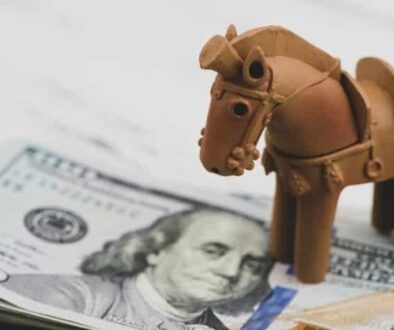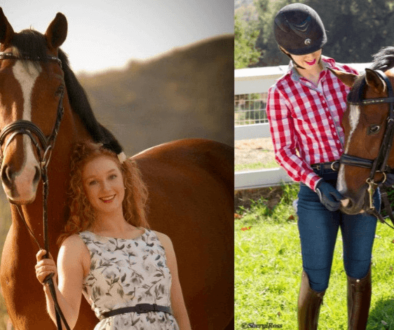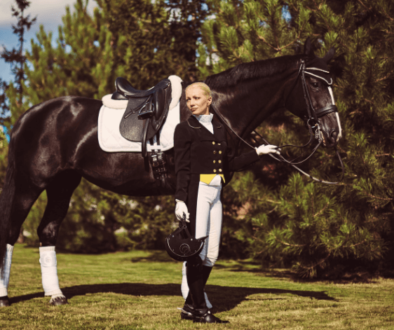The True Cost of Dressage
It’s no secret that dressage is not a cheap undertaking. There’s a lot of information floating on the internet about the exorbitant costs, including six figure horses, expensive tack and high priced shows. But, in reality, those figures are based largely on competing at an international level.
If you want to learn dressage and are curious about what the true cost of dressage is for the “regular” rider, here is a general idea of what to expect.
Getting Started: Foundational Costs of Dressage
When it comes to basic equipment, dressage is actually one of the least expensive equestrian disciplines. This section will review what you’ll need to get started. Keep in mind that you won’t need the best of everything, only the best quality that you can afford within your budget. In the beginning, focus on gaining knowledge and learning as much as possible to create a good, solid foundation.
Step #1: The Horse
First things first, you’ll need a horse. Any horse can do dressage. The horse you have now can do dressage. However, in traditional dressage, the horse must be capable of walking, trotting and cantering with correct rhythm. This is a very important thing to consider, especially if you intend to show later on. Incorrect rhythm, such as a pervasive lateral walk or unlevel steps can affect your scores greatly.
Horses are always our best teachers, and in dressage every horse has something valuable to teach. So, even if your current horse isn’t the most ideal, try to view every ride as a way to learn something new about dressage and your riding!
The Value of Learning from Schoolmasters
Click here to read a more comprehensive article on the cost of purchasing a dressage horse
Many riders new to dressage start off with a green horse, or a horse that does not have dressage training. While it is possible to learn at the same time as your horse, it’s not the easiest or most effective way and can lead to a lot of trial and error.
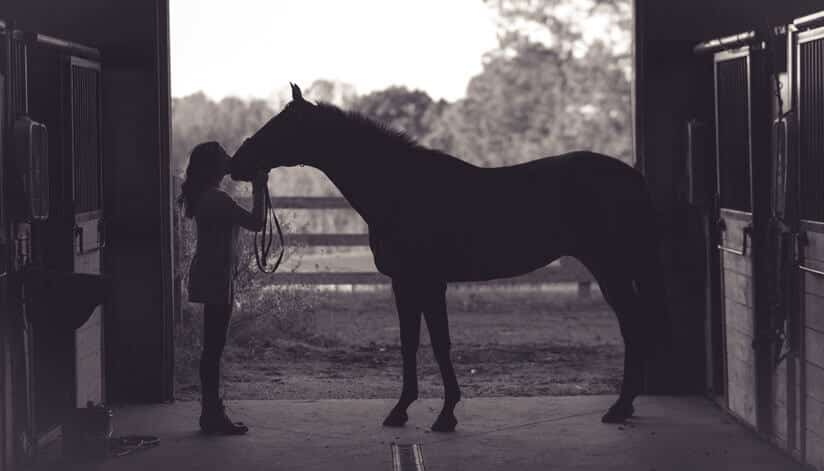
In the beginning, it can be very beneficial to take regular lessons on a schoolmaster or even lease a trained dressage horse, if possible. The cost may be more, but in the long run, it pays off. Your time and money will go much further in the beginning if you can learn the basics on a horse that already understands what is being asked, allowing you to focus on refining your skills and understanding of dressage. Schoolmasters are worth their weight in gold and the value they offer is immeasurable!
Consider Leasing
As for leasing terms, they can vary quite a bit depending on the situation. However, there are generally two types of leases. The first is a “paid” lease which costs a flat rate. An example would be paying $500 a month to cover the cost of using the horse. Again, depending on individual terms, the horse’s expenses may or may not be factored in.
The second type of lease would be a “free” lease. Normally, a free lease would allow the lessee to have use of the horse in exchange for covering the expenses of the horse. These may include board, shoes, hay and grain, and even vet bills. This is a great way to become familiar with the costs associated with owning and caring for a dressage horse.
Depending on the level of maintenance the horse requires, a free lease may not be as affordable as it sounds. If the horse needs special shoeing or requires expensive supplements or injections, the bills can pile up. Still, leasing a dressage horse is less of a financial commitment than actually owning. If the cost is still a stretch, find out if the owner would consider a partial lease. This could give you a few rides a week, and keep the cost manageable.
Shopping for a Unicorn
If you feel that you are ready to take that step and become the proud owner of a beautiful dressage horse, there are a lot of factors to consider. Prices will vary depending on breeding, training, rideability, show records, temperament and even location.
Without a doubt, warmblood and baroque horses are the breeds that universally excel in dressage. In a diamond in the rough situation, you could potentially find a suitable candidate well under $10,000. However, a horse like that may not always be the best choice for someone just starting out.
“It’s not always about getting the fanciest horse, but about finding the best horse for your needs.”
In most situations, a warmblood
Step #2: The Saddle

One of the most important pieces of tack is the saddle. But what’s more important than the saddle itself is how the saddle fits your horses back. Correct saddle fit is paramount to success in dressage. An ill-fitting saddle can cause more than a setback. A bad saddle can cause lasting damage, bad behavior and make your horse very uncomfortable and unhappy to work.
Getting a professional saddle fitter’s input from the beginning is critical. Be honest about your budget and let them know what you’re looking for. A good fitter will respect that and will either find a way to help or let you know upfront if they can’t.
There are tons of good quality used saddles at a consignment shops and in classified ads. Some sellers may even allow you to take the saddle on loan to make sure it fits your horse. You should expect to spend approximately $700 – $2,000 for a dressage saddle. If you opt for a brand new custom saddle, the cost can range anywhere from $3,000 – $6,000. Again, a brand new custom saddle is not necessary in most situations. With a little time and research, you can find a great saddle in your price range.
While the saddle is the most important and the most costly tack investment, you’ll have to make decisions about which bridle, bit and saddle pads to choose. As far as riding clothes go there are a lot of options. Don’t worry about being the most fashionable in the beginning, find what works for your budget and focus on what matters the most – lessons and training!
Step # 3: Lessons & Training
The cost of training can vary tremendously. Lessons can range from $45 – $100.00 a lesson. Full
Making a decision about how many lessons or whether or not to put your horse in full training will depend on several things. Evaluating where your riding is at, where your horse is at and what your goals are will help you make that decision.
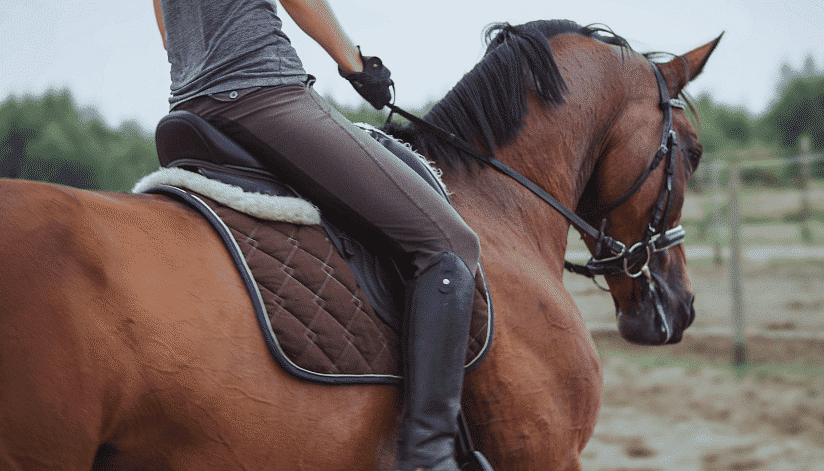
If you are new to dressage and are working towards training or first level, you don’t have to start out with a big name trainer. While it may be exciting to have a high profile trainer, often times it’s not necessary right away. Think of the first few levels of dressage as your gen eds. You don’t have to go to an Ivy League school to get credit towards your degree. You can save a lot of money by taking those same gen eds from a less expensive school and transferring to a bigger school later on when you’re ready.
However, those first few levels are where you learn the basics that will create the foundation for your dressage education. Incorrect basics can create holes in your training that will keep you from progressing. Make sure you choose a trainer that knows what they’re doing and has a record of success to prove it.
Step #4: A Place to Train
There’s nothing like a freshly watered and dragged arena. Perfectly measured and manicured footing can definitely benefit your training and your horse’s movement. However, not everyone has the best of the best when starting out – and that’s ok.
The cost to install a dressage arena can literally range from $5,000 – $100,000. The cost varies based on the type of surface, the size, the base needed, grading, drainage, and the extras like mirrors, or
If that price tag is scary, don’t fear because there are other options! Starting out, it’s not necessary to have a state of the art dressage arena with high tech footing and mirrors. You can make it work with the arena you have already or you can easily make a suitable training space. You want to practice in an area that is as close to either 20×40 meters or 20×60 meters as possible.
There are many ways to make an affordable DIY dressage arena! The “rail” can be made with ground poles or
Footing is a big deal in dressage. Bad footing can be a nightmare and result in poor performance at the least and injury at the worst. Make sure the surface isn’t too deep and is free of holes, uneven ground, and rocks.
Step # 5: Going to Shows
A great place to get started showing in dressage is at a local schooling show. This gives you the opportunity to learn the ins and outs of showing without the pressure of big show costs or having bad scores on your record forever.
Another perk to going to schooling shows is getting involved in a great community of people that are also learning. Many people go to schooling shows when they are just starting out or when they have a green horse that they are trying to acclimate to showing. Some clubs even give discounted entry fees to members of the club.

Schooling shows are much more inexpensive than rated USEF shows. The big difference is that you don’t have to
Rated USEF dressage shows
| As of 2019 | USEF Registrations/Fees | USDF Registrations/Fees |
| Horse | $95 Annual or $300 Lifetime | $35 Horse Identification Number (Min Requirement) $115 USDF Lifetime Horse Registration (Eligible for Year End Awards and Championships Programs) |
| Rider | $80 Annual Competing Membership or $2,500 Lifetime | $90 1-yr Participating Membership $72 1-yr Youth Participating Membership (Under 21) $360 5-yr Participating Membership $1,800 Lifetime Participating Membership |
| Owner | $80 Annual Competing Membership or $2,500 Lifetime | USDF Participating Membership OR USDF Business Membership |
The Personal Investment Required in Dressage
One of the biggest costs that’s not talked about in dressage is the personal investment required to learn. You can spend a lot of money on a fancy, trained horse, expensive tack and pricey lessons, but if you don’t put the time in you won’t be able to progress.
Dressage requires a level of personal investment and dedication to learn. There are only so many hours in the day and the time spent improving your understanding of dressage in and out of the saddle may come at a personal cost.
You might trade late nights out with friends for being able to wake up early to train or go to a horse show. Or, you might have to skip a weekend vacation to audit a clinic. If you’re working in a barn in exchange for lessons, you may be missing out on ways to earn actual money or grow a career outside of horses. In
X, Halt, Salute
The true cost of dressage is more than financial, it’s the time spent to learn. It takes a lot of time not only to learn dressage but a long time to bring along a dressage horse. But, it’s a journey that offers so much to our lives with horses and is worth every minute!
- You Might Be a Dressage Queen If… - April 3, 2019
- 5 Common Misconceptions About Dressage - March 30, 2019
- 5 Tail Care Tips that Really Work - March 9, 2019

